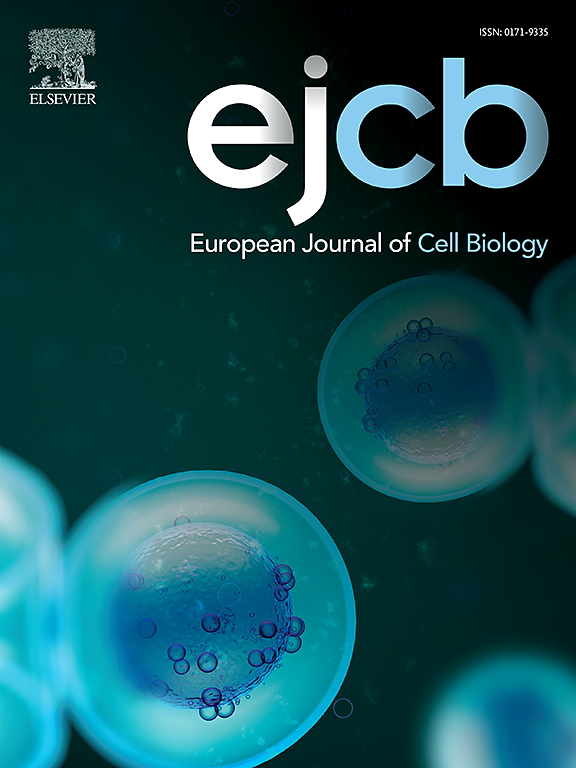Tri-culture model of intestinal epithelial cell, macrophage, and bacteria for the triggering of inflammatory bowel disease on a microfluidic device
IF 4.3
3区 生物学
Q2 CELL BIOLOGY
引用次数: 0
Abstract
Inflammatory bowel disease (IBD) involves gastrointestinal inflammation, due to intestinal epithelial barrier destruction caused by excessive immune activation. Conventional cell culture systems do not provide a model system that can recapitulate the complex interactions between epithelial cells, immune cells, and intestinal bacteria. To address this, we developed a microfluidic device that mimics the inflammatory response associated with microbial invasion of the intestinal mucosa. The device consisted of two media channels, an upper and a lower channel, and a porous membrane between these channels on which C2BBe1 intestinal epithelial cells were seeded to form a tight junction layer. Each electrode was placed in contact with both channels to continuously monitor the tight junction state. Fresh medium flow allowed bacterial numbers to be controlled and bacterial toxins to be removed, allowing co-culture of mammalian cells and bacteria. In addition, RAW264 macrophage cells were attached to the bottom of the lower channel. By introducing E. coli into the lower channel, the RAW264 cells were activated and produced TNF-α, successfully recapitulating a culture model of inflammation in which the C2BBe1cell tight junction layer was destroyed. The main structure of the device was initially made of polydimethylsiloxane to facilitate its widespread use, but with a view to introducing anaerobic bacteria in the future, a similar phenomenon was successfully reproduced using polystyrene. When TPCA-1, an IκB kinase 2 inhibitor was added into this IBD culture model, the tight junction destruction was significantly suppressed. The results suggest that this IBD culture model also is useful as a screening system for anti-IBD drugs.
肠上皮细胞、巨噬细胞和细菌在微流控装置上触发炎症性肠病的三培养模型
炎症性肠病(IBD)涉及胃肠道炎症,由于过度免疫激活引起肠上皮屏障破坏。传统的细胞培养系统不能提供一个能够概括上皮细胞、免疫细胞和肠道细菌之间复杂相互作用的模型系统。为了解决这个问题,我们开发了一种微流控装置,模拟与肠道黏膜微生物入侵相关的炎症反应。该装置由两个介质通道组成,一个上通道和一个下通道,这些通道之间有多孔膜,C2BBe1肠上皮细胞在多孔膜上播种,形成紧密的连接层。每个电极都与两个通道接触,以连续监测紧密连接状态。新鲜的培养基流动可以控制细菌数量,去除细菌毒素,使哺乳动物细胞和细菌共同培养。此外,RAW264巨噬细胞附着在下通道底部。通过将大肠杆菌引入下层通道,RAW264细胞被激活并产生TNF-α,成功再现了c2bbe1细胞紧密连接层被破坏的炎症培养模型。该装置的主要结构最初由聚二甲基硅氧烷制成,以方便其广泛使用,但考虑到将来引入厌氧菌,使用聚苯乙烯成功地再现了类似的现象。当IBD培养模型中加入IκB激酶2抑制剂TPCA-1时,紧密连接破坏明显受到抑制。结果表明,这种IBD培养模型也可作为抗IBD药物的筛选系统。
本文章由计算机程序翻译,如有差异,请以英文原文为准。
求助全文
约1分钟内获得全文
求助全文
来源期刊

European journal of cell biology
生物-细胞生物学
CiteScore
7.30
自引率
1.50%
发文量
80
审稿时长
38 days
期刊介绍:
The European Journal of Cell Biology, a journal of experimental cell investigation, publishes reviews, original articles and short communications on the structure, function and macromolecular organization of cells and cell components. Contributions focusing on cellular dynamics, motility and differentiation, particularly if related to cellular biochemistry, molecular biology, immunology, neurobiology, and developmental biology are encouraged. Manuscripts describing significant technical advances are also welcome. In addition, papers dealing with biomedical issues of general interest to cell biologists will be published. Contributions addressing cell biological problems in prokaryotes and plants are also welcome.
 求助内容:
求助内容: 应助结果提醒方式:
应助结果提醒方式:


